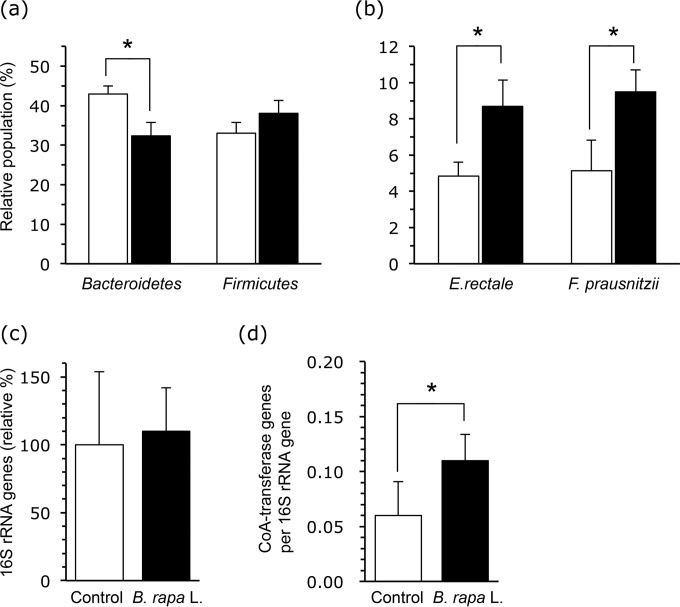FIG 1.
Effects of oral administration of the extract of B. rapa L. on the colonic bacterial community and the level of a gene involved in butyrate generation. (a) Relative bacterial populations at the phylum level (among the Bacteroidetes, Bacteroides and Prevotella; and among the Firmicutes, the B. coccoides-E. rectale group and C. leptum subgroup). (b) Relative bacterial populations in the representative butyrate-producing bacteria (E. rectale and F. prausnitzii). The data shown in panels a and b were obtained using the sequence-specific rRNA cleavage method. (c) Total bacterial 16S rRNA copies in colonic samples. (d) Data are expressed as the relative gene copy numbers per colonic contents, assuming that the average for the control group is 100. The number of butyryl-CoA–CoA transferase genes is relative to the number of 16S rRNA genes. Error bars indicate standard deviations (SD) from the results for all mice used in three independent experiments performed together (control group, n = 15; B. rapa L. group, n = 16). The levels of significance of differences between the control (white bars) and B. rapa L. (black bars) groups were determined by Student's t test (*, P < 0.05).

